Description and Biology
The common seadragon, also known as the weedy seadragon (Phyllopteryx taeniolatus), is a captivating marine fish belonging to the Syngnathiformes order, which also includes pipefishes. These enchanting creatures lack teeth and stomachs, a characteristic that dictates their feeding habits.
Distinguished by their intricate camouflage, weedy seadragons possess long, leaf-like appendages that mimic the appearance of seaweed, allowing them to seamlessly blend in with their surroundings. This remarkable adaptation serves as their primary defense mechanism.
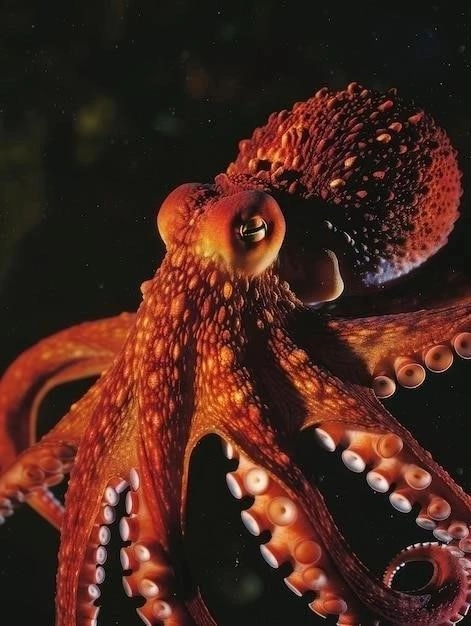
Habitat and Distribution
The weedy seadragon (Phyllopteryx taeniolatus), a master of disguise in the marine world, is endemic to the coastal waters of Australia. This limited distribution range makes them a particularly intriguing subject of study and highlights the importance of focused conservation efforts.
Geographical Range:
The weedy seadragon’s distribution spans along the southern and eastern coastlines of Australia, encompassing a region influenced by the temperate waters of the Indian and Pacific Oceans. Their range extends from New South Wales, where they are frequently observed in the waters around Sydney, south to Tasmania, and westward along the Victorian coastline. Sightings have also been reported in the easternmost regions of South Australia.
Preferred Habitat:
These fascinating creatures exhibit a preference for relatively shallow, nearshore habitats that provide ample cover and a rich source of food. Key features of their preferred habitat include:
- Seagrass meadows: Lush beds of seagrass, particularly those dominated by species like Posidonia and Amphibolis, offer weedy seadragons ideal conditions. The intricate structure of the seagrass provides numerous hiding places and serves as a nursery ground for the small crustaceans that make up their diet.
- Kelp forests: In certain areas, weedy seadragons are found among the towering fronds of kelp forests. These underwater forests create a similar, albeit more structurally complex, environment to seagrass meadows.
- Rocky reefs: While less common than seagrass and kelp habitats, weedy seadragons have been observed around rocky reefs, particularly those with crevices and overhangs that offer shelter.
- Sandy bottoms: Although not their primary habitat, weedy seadragons may venture over sandy bottoms, especially when searching for food.
Depth Range:
Weedy seadragons are most frequently encountered at depths ranging from 5 to 30 meters (16 to 98 feet). This depth range coincides with the optimal light penetration for seagrass and kelp growth, ensuring a productive ecosystem.
Water Temperature and Salinity:
As inhabitants of temperate waters, weedy seadragons thrive in a relatively narrow temperature range of 10-18°C (50-64°F). They are adapted to the moderate salinity levels typical of their coastal habitat.
Factors Influencing Distribution:
Several factors influence the distribution of weedy seadragons within their range:
- Availability of food: The abundance of their primary prey, mysid shrimp and other small crustaceans, plays a crucial role in determining their distribution.
- Habitat quality and extent: The health and size of seagrass meadows and kelp forests are essential for providing adequate shelter and breeding grounds.
- Water quality: Weedy seadragons are sensitive to pollution and changes in water quality, particularly sedimentation and nutrient enrichment.
- Human activities: Coastal development, pollution, and fishing activities can negatively impact their habitat and populations.
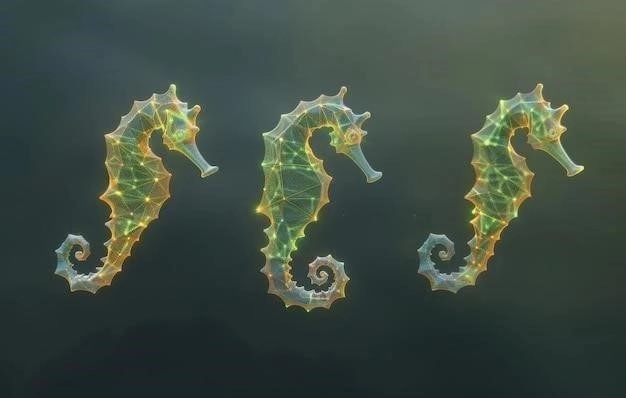
Diet and Feeding Habits
The weedy seadragon (Phyllopteryx taeniolatus), a captivating denizen of Australia’s coastal waters, exhibits a specialized diet and intriguing feeding behaviors that are intricately linked to its unique morphology and the ecological niche it occupies. Lacking teeth and a true stomach, this enigmatic creature relies on a combination of stealth, precision, and a voracious appetite to thrive in its temperate marine environment.
Primary Prey:
The weedy seadragon’s diet consists primarily of small, planktonic crustaceans that inhabit the seagrass meadows and kelp forests where these fish reside. Their preferred prey items include:
- Mysid shrimp: These small, translucent shrimp are a staple food source for weedy seadragons. They are abundant in seagrass beds and provide a rich source of nutrients.
- Amphipods: Also known as “scuds,” amphipods are small, laterally compressed crustaceans that are often found in association with seagrass and algae.
- Other small crustaceans: Weedy seadragons may also consume other small crustaceans, such as copepods and isopods, depending on their availability.
- Larval fish: While not a primary food source, weedy seadragons may opportunistically consume the larvae of other fish species.
Feeding Adaptations:
Weedy seadragons have evolved a suite of specialized adaptations that enable them to effectively capture their elusive prey:
- Elongated snout: Their long, pipe-like snout acts as a pipette, allowing them to create a strong suction force. This suction is generated by rapidly expanding their buccal cavity (mouth).
- Protrusible jaws: Their jaws can be rapidly protruded, creating a suction force that draws prey into their mouths.
- Camouflage: Their intricate camouflage, characterized by leaf-like appendages, helps them to blend in with their surroundings, allowing them to ambush unsuspecting prey.
- Lack of teeth: The absence of teeth is not a hindrance to their feeding strategy. Instead, they rely on suction feeding, rapidly sucking in their prey whole.
- Continuous feeding: Without a true stomach for storing large meals, weedy seadragons must feed almost constantly throughout the day to meet their energy demands.
Feeding Behavior:
Weedy seadragons are typically solitary feeders, relying on stealth and camouflage to approach their prey undetected. They are often observed hovering motionless in the water column, mimicking the swaying motion of seaweed. When a suitable prey item is within range, they strike with lightning speed, using their elongated snout and protrusible jaws to capture their unsuspecting victim.
The absence of a stomach necessitates a unique digestive process. Food passes directly from the esophagus to the intestine, where it is broken down by enzymes and absorbed. This continuous feeding strategy ensures a steady intake of nutrients to fuel their metabolism and support their relatively sedentary lifestyle.
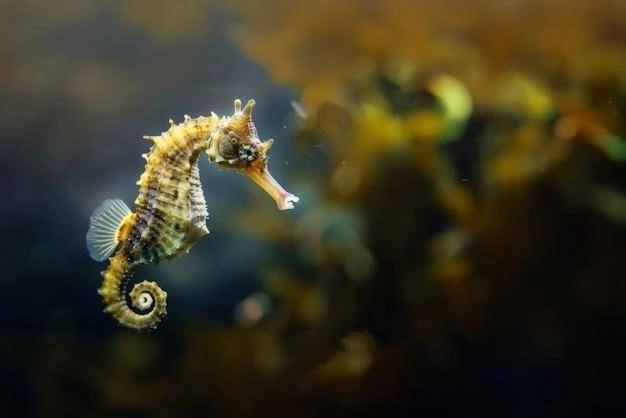
Behavior and Social Structure
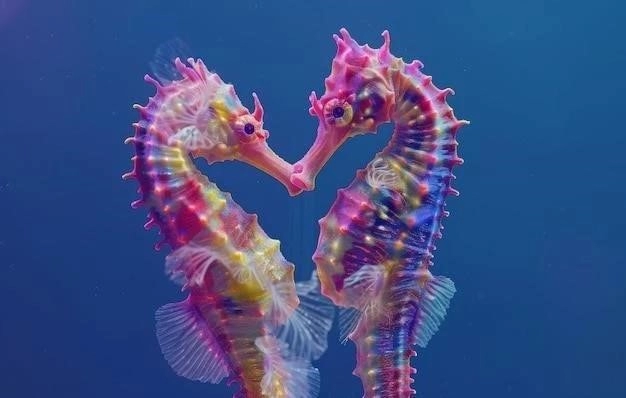
The weedy seadragon (Phyllopteryx taeniolatus), a master of camouflage and an iconic inhabitant of Australia’s temperate waters, exhibits a fascinating repertoire of behaviors and a unique social structure that has captivated marine biologists and underwater enthusiasts alike. Their elusive nature and cryptic lifestyle have made them a challenging subject of study, but ongoing research continues to unveil the secrets of their underwater world.
Solitary and Sedentary:
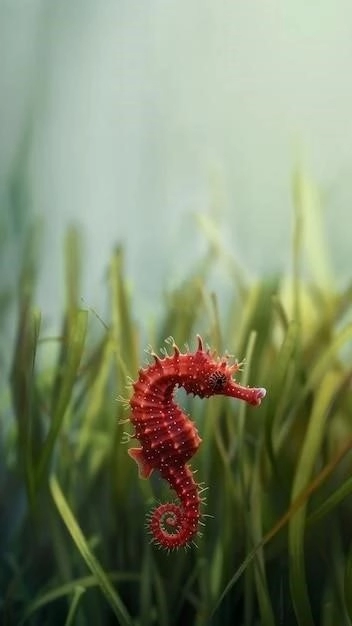
Weedy seadragons are generally solitary creatures, often observed alone or in loose aggregations, particularly during the breeding season. They are not known to form permanent social bonds and exhibit a remarkable degree of independence throughout much of their lives. Their movements are generally slow and deliberate, reflecting their sedentary lifestyle and reliance on camouflage for both predator avoidance and prey capture.
Masters of Disguise:
Their most defining behavioral characteristic is their mastery of disguise. Weedy seadragons possess elaborate, leaf-like appendages that mimic the swaying fronds of seaweed and kelp, providing them with exceptional camouflage in their natural environment. This remarkable adaptation allows them to blend seamlessly into their surroundings, rendering them practically invisible to both predators and unsuspecting prey.
Drifting with the Current:
Rather than actively swimming long distances, weedy seadragons are often observed drifting passively with the ocean currents. This behavior, known as “drifting,” is facilitated by their elongated bodies and lack of a swim bladder, allowing them to conserve energy and exploit the natural flow of water to their advantage. Drifting allows them to cover greater distances with minimal effort, aiding in their search for food and mates.
Courtship and Reproduction:
During the breeding season, typically from late winter to early spring, weedy seadragons engage in elaborate courtship rituals. Males, adorned in their vibrant breeding colors, perform a series of head-bobbing and swaying displays to attract females. Once a female has chosen a mate, she deposits her eggs onto a specialized brood patch located on the underside of the male’s tail. The male assumes sole responsibility for incubating the eggs until they hatch, providing them with oxygen and protection.
Limited Interactions:
Outside of the breeding season, interactions between weedy seadragons are generally limited. They are not known to engage in cooperative behaviors, such as group hunting or communal defense. Their solitary nature and cryptic lifestyle suggest that they have evolved to thrive in environments where individual survival is paramount.
Continued research into the behavior and social structure of weedy seadragons is crucial for understanding the ecological role of these enigmatic creatures and for developing effective conservation strategies to ensure their long-term survival in the face of increasing anthropogenic pressures on their marine environment.
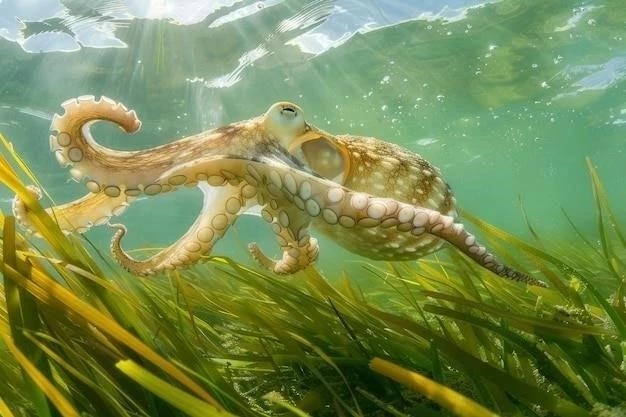
Reproduction and Life Cycle
The weedy seadragon (Phyllopteryx taeniolatus), a creature of remarkable adaptations and captivating beauty, exhibits a unique reproductive strategy and a complex life cycle that have fascinated marine biologists and underwater enthusiasts for decades. Their cryptic lifestyle and the challenges of observing them in their natural habitat have made unravelling the intricacies of their reproductive biology an ongoing endeavor.
A Seasonal Affair:
Breeding in weedy seadragons is a seasonal event, typically coinciding with the transition from winter to spring in their temperate Australian waters. As water temperatures begin to rise, signaling the onset of warmer months, hormonal changes within both males and females trigger the start of their elaborate courtship and reproductive behaviors.
Courtship and Egg Transfer:
During the breeding season, male weedy seadragons undergo a remarkable transformation, their usually muted coloration intensifying to vibrant shades of yellow and purple. This striking display serves to attract females and signal their readiness to mate. Courtship rituals involve a mesmerizing dance of swaying, head-bobbing, and intertwining of their elongated bodies.
Once a female has chosen a mate, she prepares to deposit her eggs, typically numbering between 100 and 250. Unlike most fish species, where females deposit their eggs onto a substrate or into a nest, female weedy seadragons transfer their eggs onto a specialized brood patch located on the underside of the male’s tail. This brood patch, which develops during the breeding season, is richly supplied with blood vessels, providing the developing embryos with oxygen.
Paternal Care and Incubation:
After the eggs are securely attached to his brood patch, the male weedy seadragon assumes sole responsibility for their care and incubation. For the next four to six weeks, he will diligently guard the eggs, ensuring they receive adequate oxygenation and protection from predators. The male’s tail undulates rhythmically, creating a gentle current that keeps the eggs well-oxygenated.
Hatching and Juvenile Stage:
Upon hatching, the miniature weedy seadragons, measuring just a few millimeters in length, emerge as free-swimming larvae. These tiny replicas of their parents possess a yolk sac that provides them with nourishment for their first few days of life. During this vulnerable stage, they are at the mercy of ocean currents and face the constant threat of predation.
Growth, Maturity, and Lifespan:
As the juvenile weedy seadragons grow, they gradually develop their characteristic leafy appendages, providing them with camouflage and protection. They transition from a planktonic lifestyle to inhabiting the seagrass meadows and kelp forests that will become their adult homes. Sexual maturity is typically reached between two and three years of age. The average lifespan of a weedy seadragon in the wild is estimated to be between five and ten years.
The remarkable reproductive strategy and complex life cycle of the weedy seadragon highlight the incredible diversity of adaptations found in the marine environment. Ongoing research into their reproductive biology is essential for informing conservation efforts and ensuring the long-term survival of these captivating creatures.

Conservation Status and Threats
The weedy seadragon (Phyllopteryx taeniolatus), an iconic and captivating inhabitant of Australia’s temperate waters, faces a growing suite of threats that are of increasing concern to marine conservationists. While their conservation status is currently classified as Least Concern (LC) on the IUCN Red List, this designation belies the growing pressures on their populations and the need for proactive conservation measures to ensure their long-term survival.
Current Status:
The IUCN Red List assessment, while acknowledging the weedy seadragon’s wide distribution range and the absence of evidence for widespread population declines, highlights the vulnerability of this species to a range of anthropogenic threats. These threats, if left unaddressed, could lead to localized extinctions and a decline in their overall conservation status.
Major Threats:
Several key threats have been identified as posing significant risks to weedy seadragon populations:
- Habitat Loss and Degradation: As coastal development intensifies and pollution from industrial and agricultural runoff increases, the seagrass meadows and kelp forests that weedy seadragons depend on for food and shelter are facing degradation and loss. Sedimentation, nutrient enrichment, and physical damage from anchors and dredging activities are all contributing to the decline of these critical habitats.
- Climate Change: The impacts of climate change, including ocean warming, acidification, and changes in current patterns, are likely to exacerbate the threats to weedy seadragons. Rising water temperatures can stress their physiological tolerances, while ocean acidification can harm the delicate structures of their prey species, leading to cascading effects through the food web.
- Collection for the Aquarium Trade: While the international trade in weedy seadragons is regulated, illegal collection for the aquarium trade remains a concern. Their striking appearance and unique biology make them highly sought-after specimens, but the capture and transport of these delicate creatures can be highly stressful and often result in mortality.
- Pollution: Pollution from a variety of sources, including agricultural runoff, industrial discharge, and plastic debris, poses a significant threat to weedy seadragons. Ingestion of plastic fragments can lead to starvation and internal injuries, while chemical pollutants can accumulate in their tissues, impacting their health and reproductive success.
- Bycatch: Weedy seadragons can become entangled in fishing gear, particularly in gillnets and trammel nets, as bycatch. While the overall impact of bycatch on their populations is not fully understood, it is likely to be a significant source of mortality, particularly in areas of high fishing activity.
Addressing these multifaceted threats requires a comprehensive approach that includes habitat protection and restoration, pollution reduction, sustainable fishing practices, and public education to raise awareness about the plight of these enigmatic creatures and the importance of their conservation.










